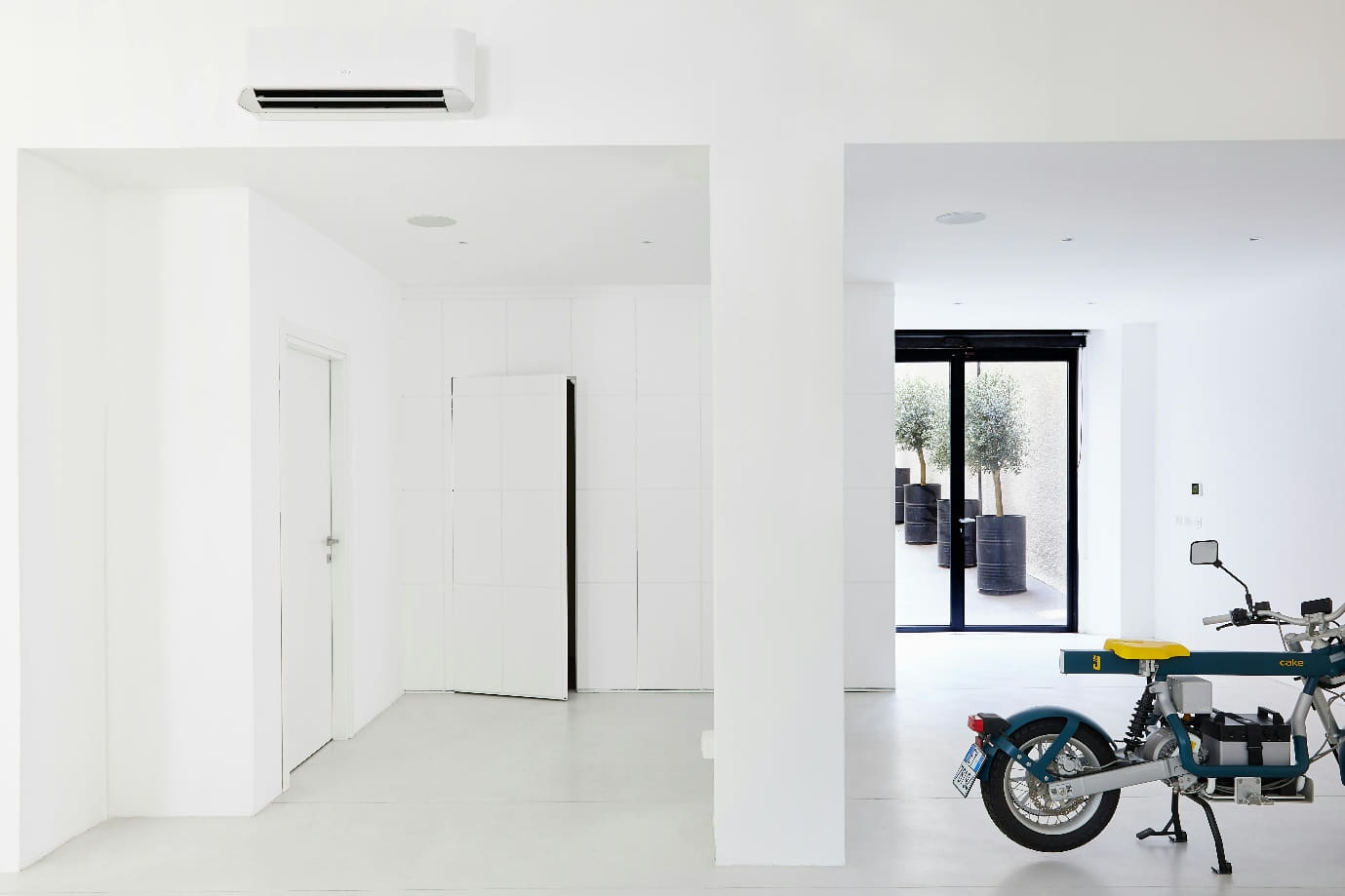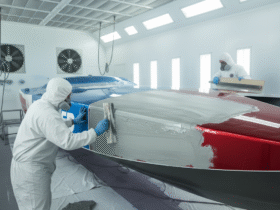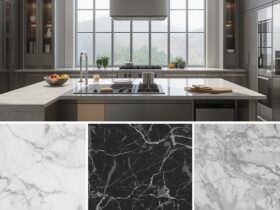Author’s Note: Thinking about giving your garage floor a DIY epoxy makeover? Before you crack open that kit from the hardware store, have a read. As a fellow North Shore Sydney homeowner and DIY enthusiast, I’ve learned (sometimes the hard way) that epoxy flooring isn’t as easy as a weekend paint job. In this easy-to-follow guide, I’ll walk you through why DIY epoxy floors can go pear-shaped even when you do follow the instructions to a tee, and what’s changed in 2025.
Now, if you are already panicking and want to give up on the freaking idea, fair enough. I would just call an epoxy flooring contractor near me and get him to do the job for me. But if you are still here for it, then grab a cold one, mate, and let’s chat about epoxy floors like two blokes at a BBQ.
Table of Contents
- Introduction
- Poor Surface Preparation
- Moisture and Humidity Woes
- Weak or Incompatible Concrete
- Low-Quality Epoxy Products & Application Mistakes
- 2025 Trends: DIY vs Pro Epoxy Jobs
- Conclusion

- Introduction
Alright, mate. So you’re eyeing off that tired concrete garage floor and thinking: “Bit of epoxy, bit of a weekend, job done, right?” I’ve been there. We’ve all seen those shiny showroom floors online and thought, “How hard can it be?” But here’s the kicker: DIY epoxy kits can go horribly wrong even if you follow every single instruction on the back of the box. Not because you’re daft, but because there are things those instructions just don’t tell you.
This guide is for blokes like us — mid-30s to 50s, homeowners up on Sydney’s North Shore, who love a good DIY project but want results that actually last. I’m going to break down why these DIY epoxy jobs can flop, even with the best intentions. I’ll also chuck in some 2025 updates, trends, and honest opinions along the way. You deserve the truth before you break your back on a floor that’s going to peel in six months.
- Poor Surface Preparation
Look, if there’s one thing that kills DIY epoxy floors, it’s prep. Or rather, not doing it properly. Most kits tell you to clean the floor and maybe give it an acid wash. Sounds easy, right? But the reality is, epoxy needs something to grip – a rough, clean, porous surface. Most concrete in homes around here? It’s smooth as a billiard table.
Acid etching might sound cool, but unless you’re grinding that surface with a proper machine, you’re basically painting on Teflon. Even a tiny bit of grease, old paint, or dust will sabotage the bond. And don’t even get me started on the dust – it gets everywhere. If you don’t vacuum and wipe down that slab like you’re prepping it for surgery, forget it.
What most kits don’t tell you is that professional installers use diamond grinders, which give the floor that perfect surface profile. The difference? A DIYer may clean and etch the surface for an hour. A pro might spend half a day just prepping it. And trust me, the results show.
Real Talk Tip: Rent a diamond grinder. Yes, it’s loud and dusty. But that’s the stuff of proper epoxy bonding. Don’t half-arse it. If you skip this step, you’re basically setting yourself up for disappointment. And the price is not that hefty. One can hire a single-phase grinder and a vacuum, top-of-range industrial grades for around $750 including delivery charges from the Kennards Hire round the corner.
Also, make sure the floor is bone dry. If it rained a few days ago and your garage feels damp, wait it out. Moisture messes with the bond and leads to bubbling and peeling. And if your garage is part of a sloping block? Double trouble. Water might be seeping through the slab without you even knowing it.
- Moisture and Humidity Woes
Sydney’s North Shore can be humid. You know it, I know it. And humidity is the silent killer of epoxy floors. If there’s even a hint of moisture in the slab, it’s like trying to tape something to a wet sponge. Your epoxy will bubble, peel or lift faster than you can say “should’ve waited for a dry day.”
Do a simple test. Tape down a bit of plastic overnight on the concrete. If there’s condensation underneath in the morning? Hold off. Your slab’s too damp. And air humidity matters too. Apply epoxy on a hot, sticky day and you’ll see it go milky or not cure right.
2025 Update: Some new kits claim “moisture-tolerant formulas.” They help, but they’re not miracle workers. If the slab’s sweating, don’t bother.
Also, check your drainage. If water pools around the garage after a good rain, that’s going to be a problem long-term. A good epoxy job is only as good as the surface it sits on. No point slapping on a fancy coat if your foundation is compromised by water.
Quick Tip: Use a moisture meter if you’re not sure. It costs a bit, but it’s cheaper than redoing the whole floor.
- Weak or Incompatible Concrete
This one’s a bit sneaky. Not all concrete is created equal. That 40-year-old slab in your garage? It might look solid, but if it’s chalky or weak underneath, epoxy won’t save it. You’ll coat it nicely… then the concrete itself starts flaking off. It’s not the epoxy’s fault – it’s the base crumbling.
Old painted floors? Yeah, you can’t just slap epoxy over it. You need to grind all that old stuff off first. And definitely don’t try epoxy on timber, tiles, or anything that’s not bare, sound concrete.
DIY Danger Zone: If your slab dusts when you sweep or crumbles when you tap it with a screwdriver, it needs repairing before epoxy.
And those hairline cracks? You need to patch them with the right filler. Don’t think epoxy will magically fill them in. It doesn’t work that way. Poor prep here means your fancy finish will flake off with the next season.
- Low-Quality Epoxy Products & Application Mistakes
This is where a lot of DIYers get stitched up. You grab a $200 kit at Bunnings and think, “Sweet, this’ll do.” But that’s like expecting champagne performance from a goon bag. Most DIY kits are water-based and thin. They’re made to go on easy, not to last forever.
Hot tire lift is real. Park your ute after a drive and the heat can lift off dodgy epoxy like melted cheese. Same story with poor mixing – if you don’t blend Part A and Part B properly, or leave stuff unmixed in the bucket, you’ll get patches that never cure. Or worse, go soft.
2025 Tip: Some new kits have self-mixing pouches or easier instructions. Great, but still take your time. And don’t try to “stretch” the product – too thin and it’s game over.
Also, follow cure times. If the instructions say 24 hours before a topcoat, don’t rush it. Humidity or cold temps can extend that. Be patient.
Mate’s Advice: Have a helper. One to mix, one to roll. It makes a world of difference. And always wear gloves and a respirator – that stuff gets nasty quick.
- 2025 Trends: DIY vs Pro Epoxy Jobs
Here’s what I’ve noticed lately: more North Shore blokes are throwing in the DIY towel and getting pros to do it. Why? Because the cost difference, once you factor in your time, tools, risk, and materials… isn’t that huge. And let’s be honest, the pros do a better job. They’ve got the gear, the knowledge, and the technique.
Also, pro floors now look amazing. Metallic swirls, custom flakes, even embedded logos – stuff that makes your garage look like a man cave from a Hollywood film. And most of them knock it out in a day or two.
Still DIYing? Fair play. But do it right. Don’t skimp. And understand what you’re up against.
There’s also been a spike in new hybrid coatings in 2025 – polyurea and polyaspartic blends that offer fast cure times and better resistance to chemicals. These are harder to apply but are game changers for the long haul.
- Conclusion
Garage epoxy floors are awesome. They make your garage look schmick, are easier to clean, and give the place a bit of pride. But if you’re doing it yourself, go in with your eyes open. It’s not a quick paint job. It’s a serious project that needs planning, gear, and elbow grease.
If you’re up for the challenge, I salute you. Just don’t skip prep, watch the weather, and spend a bit extra on good products. If not? No shame in calling in the pros. You’ll still get that shiny, bulletproof finish – minus the stress.
And who knows? Maybe you save your back and have a cold beer watching someone else do the hard yakka. Either way, you win. Just make sure your garage floor is something you’ll be proud to show off.
Cheers to good floors and better choices!










Leave a Review